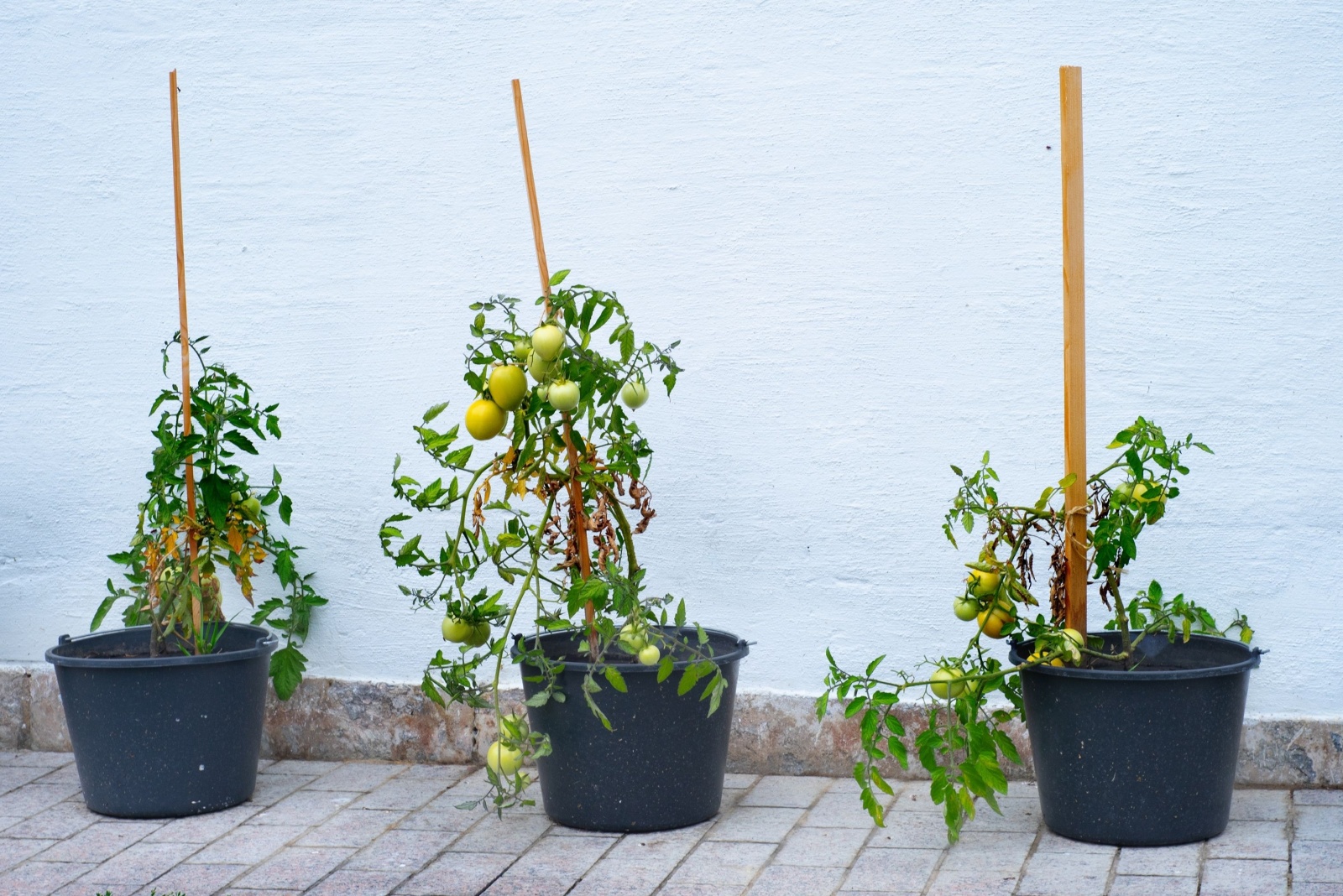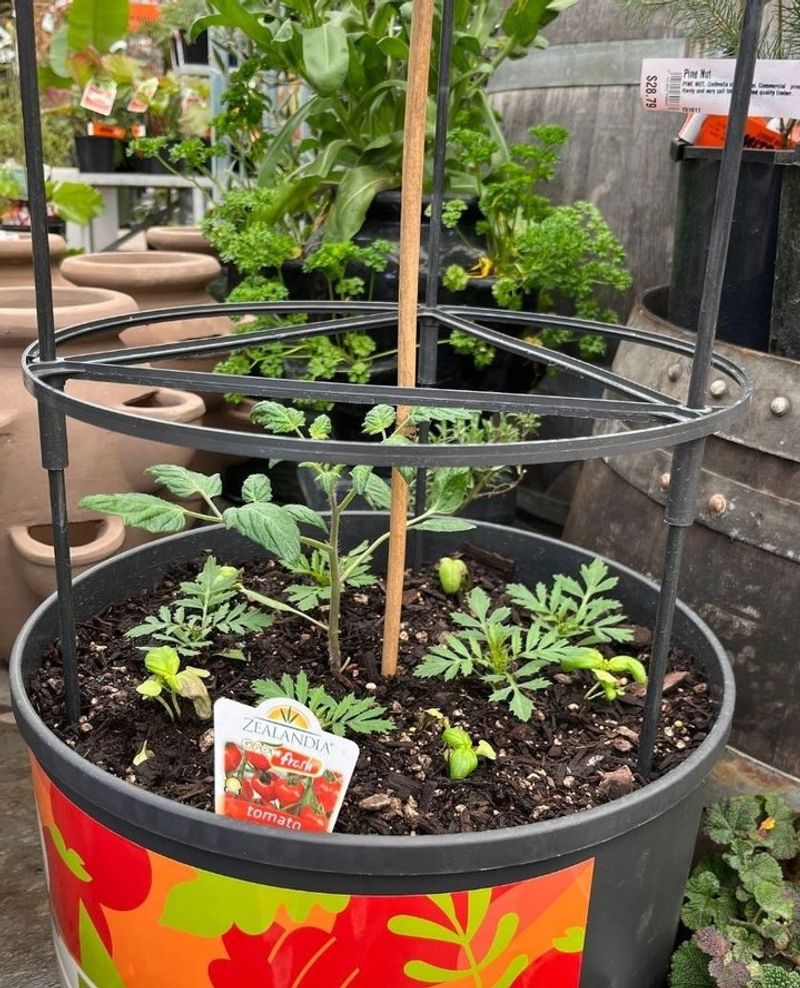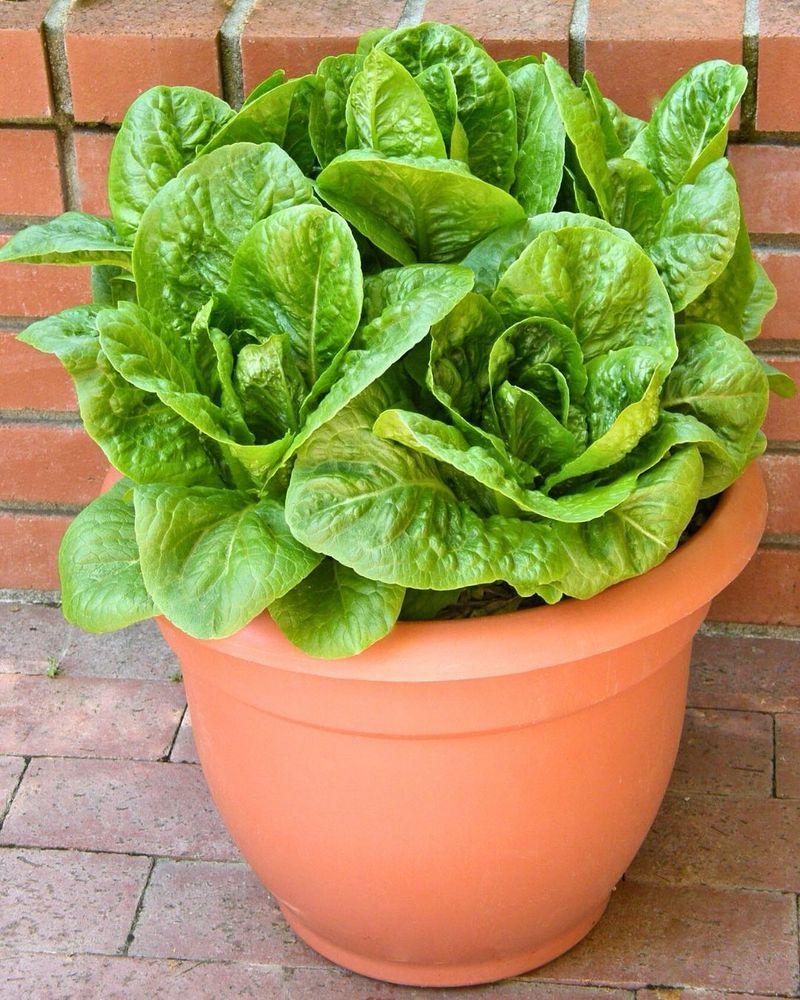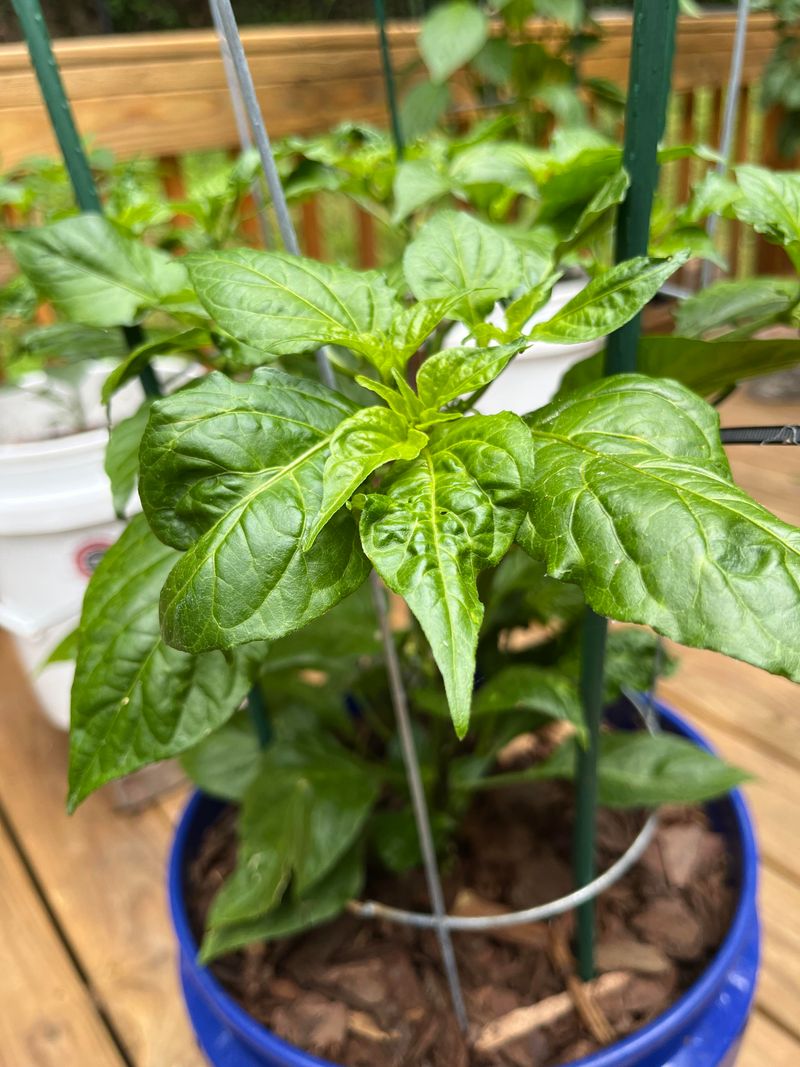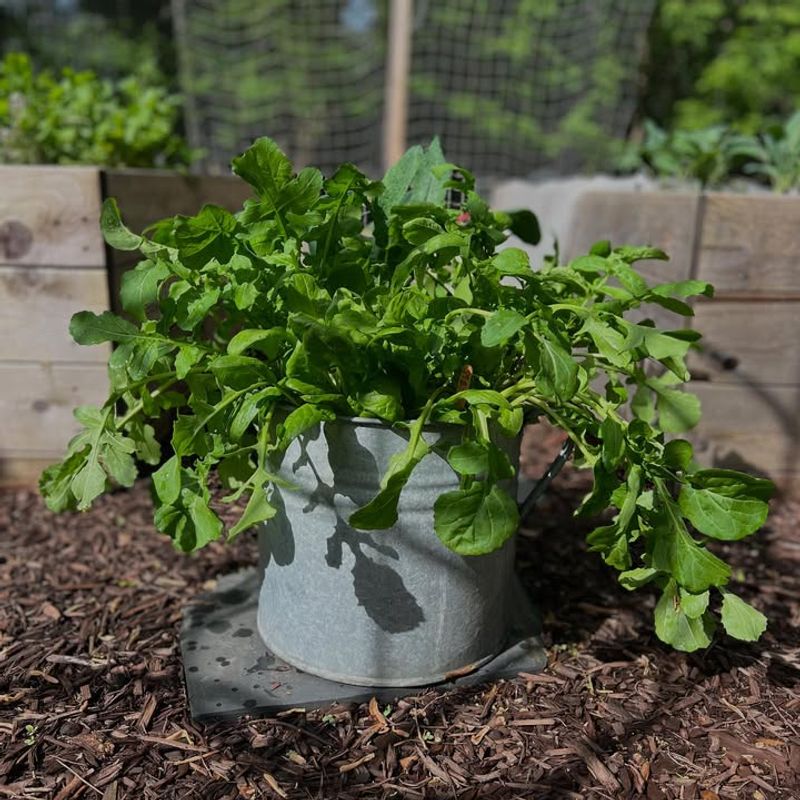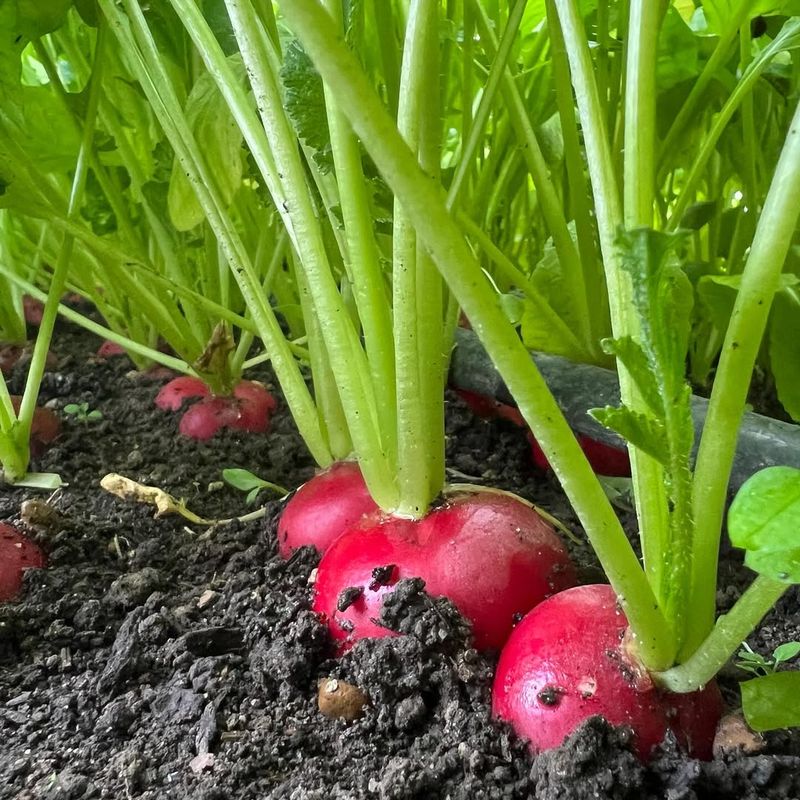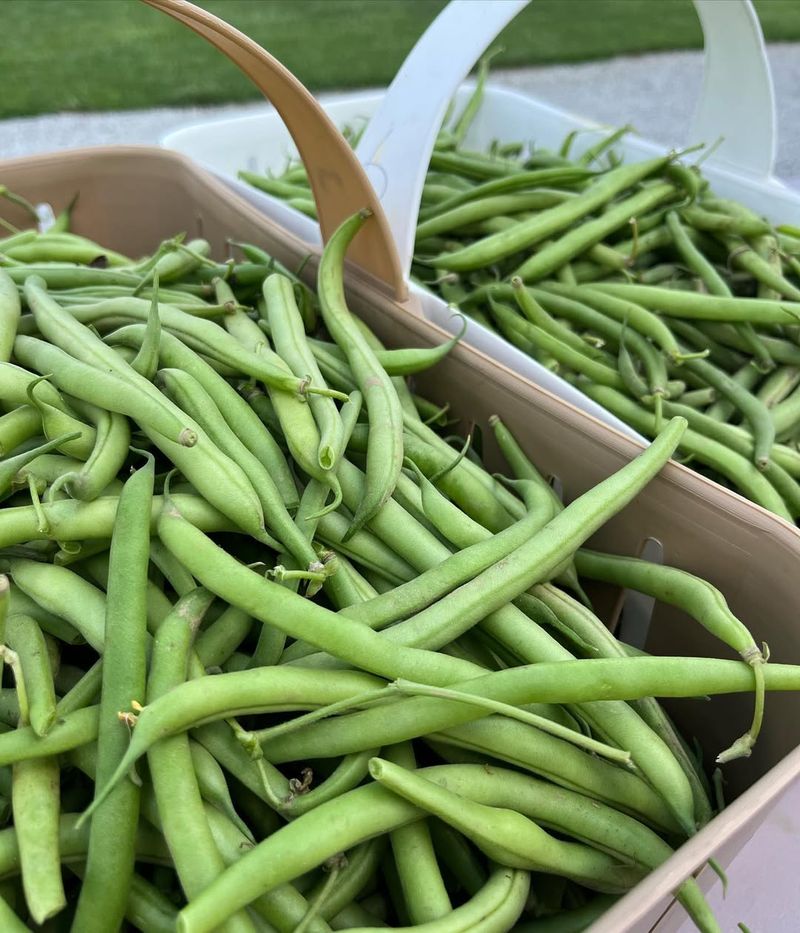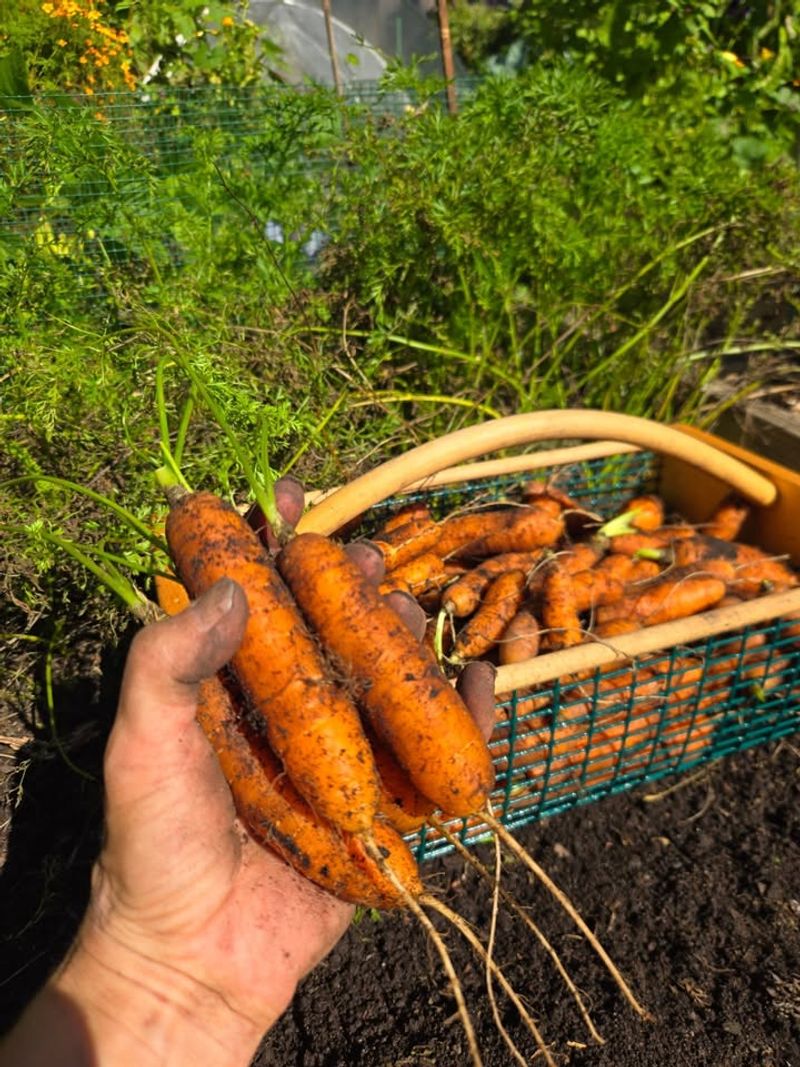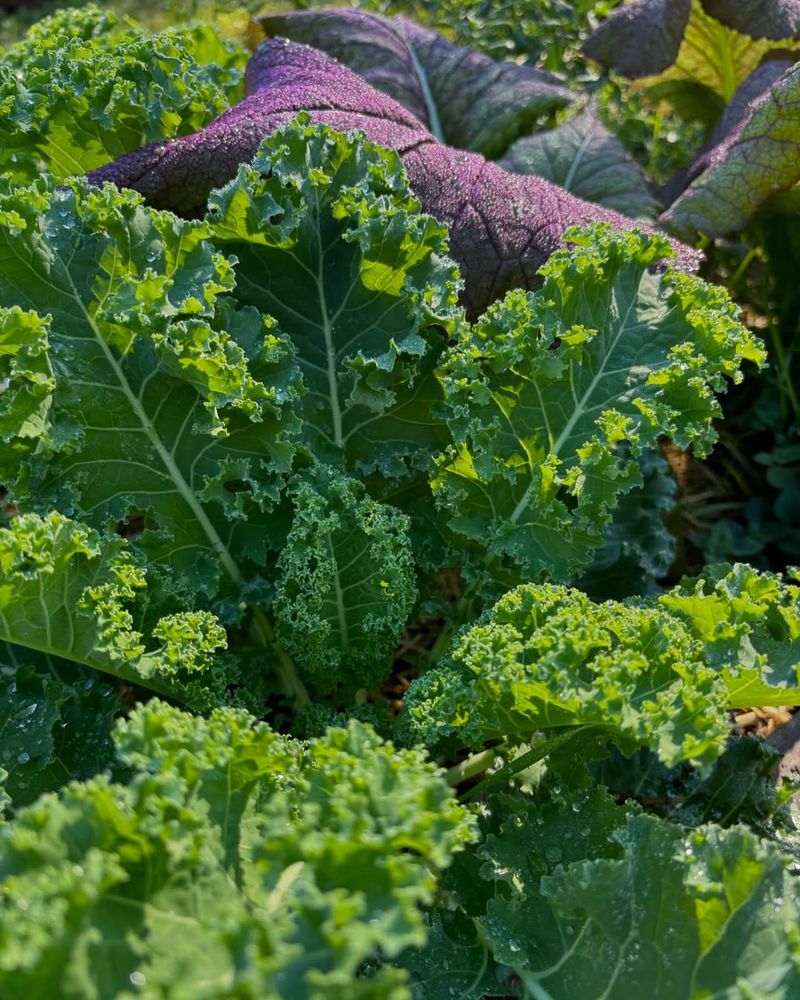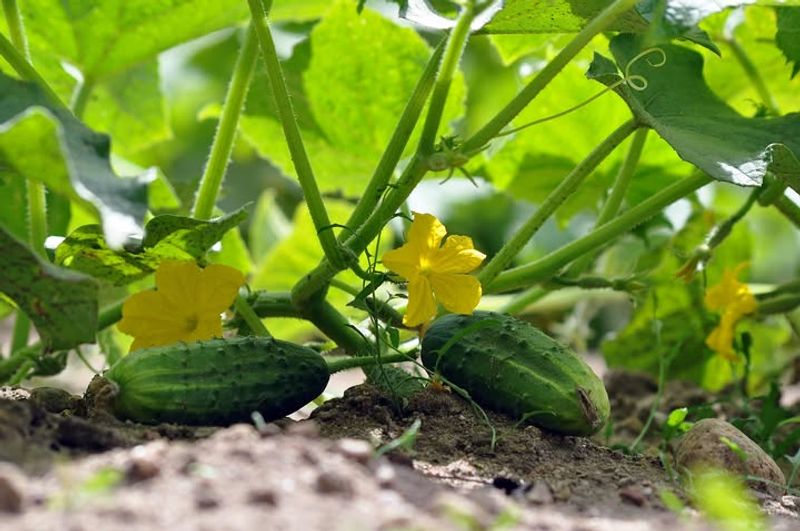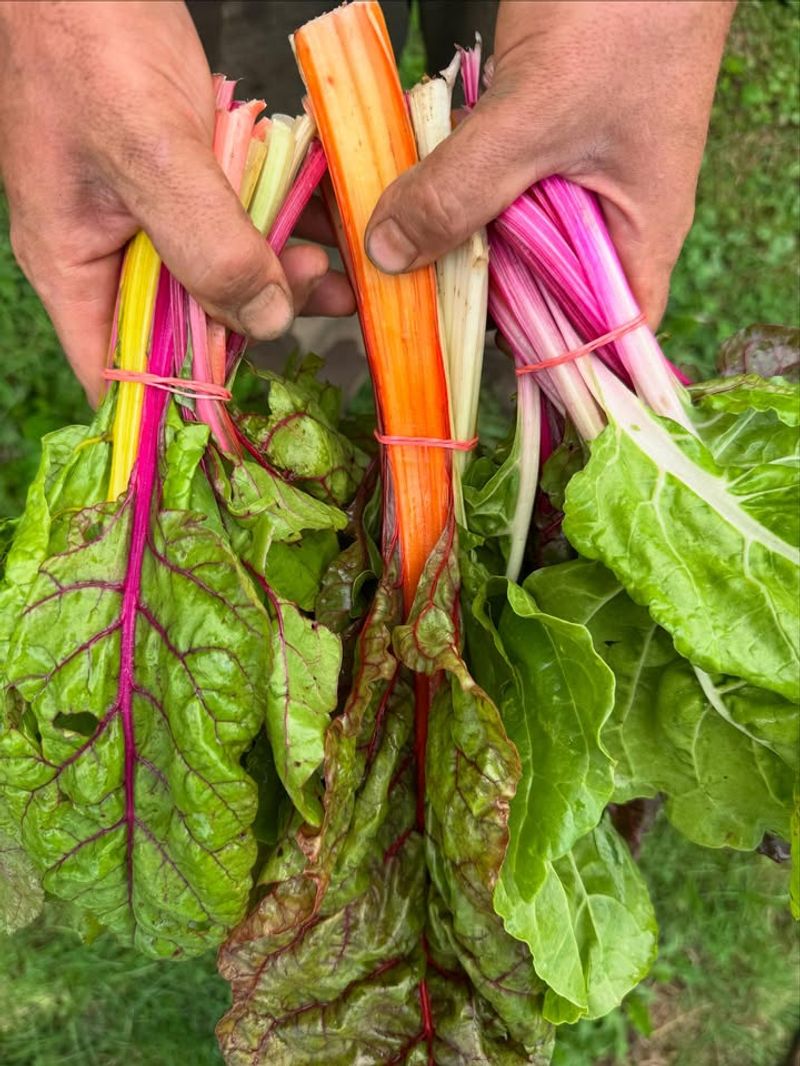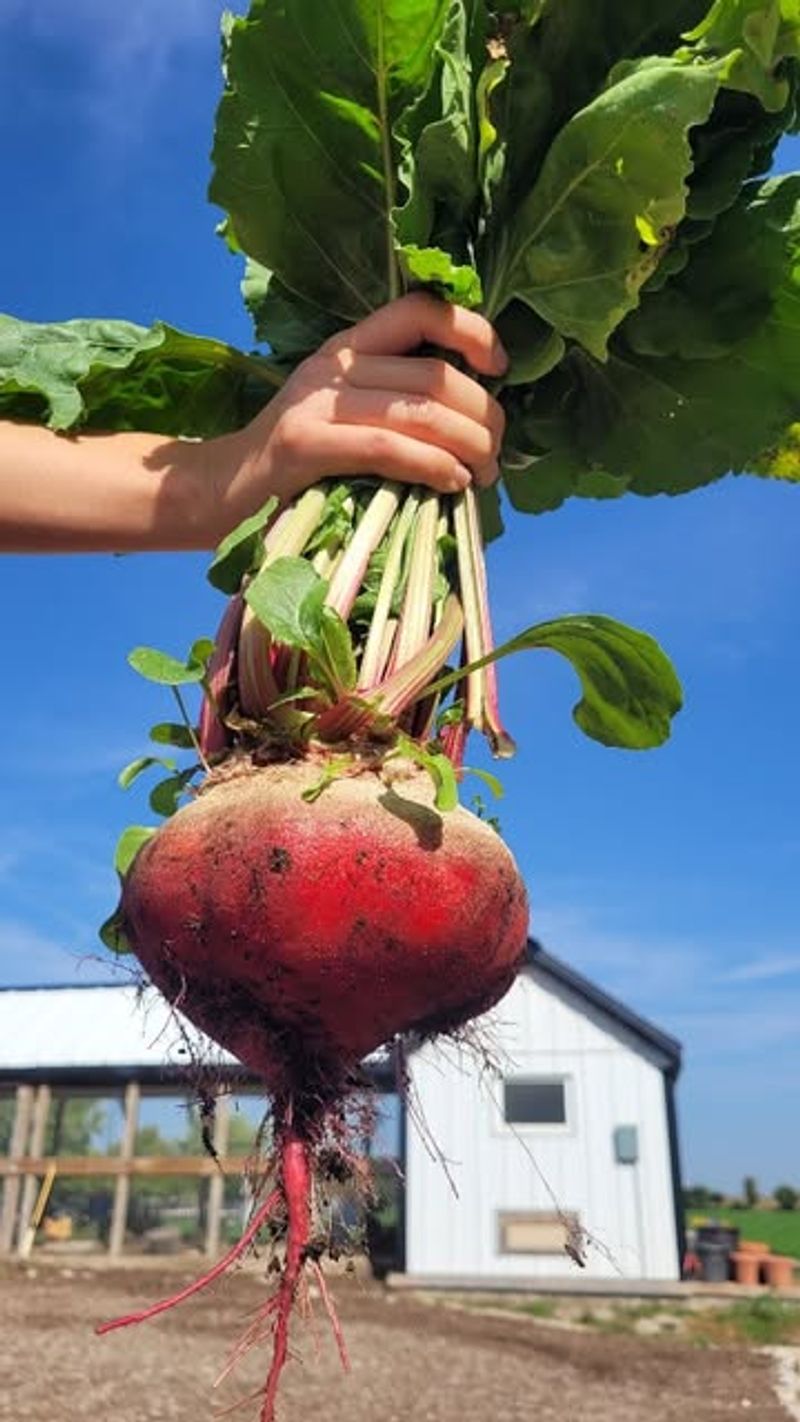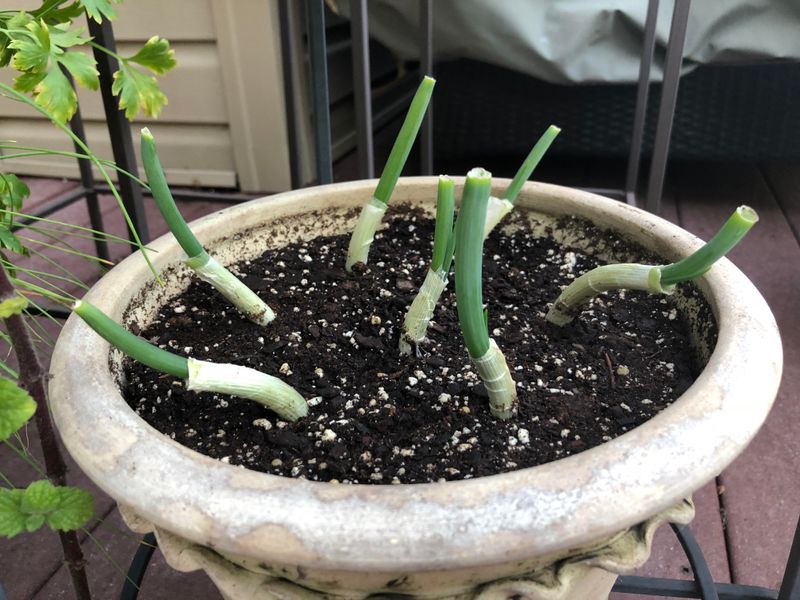Growing your own vegetables doesn’t require a big backyard or fancy equipment. With just a few buckets and some basic supplies, you can enjoy fresh produce right from your porch or patio in Kentucky.
Container gardening makes it possible to harvest homegrown veggies no matter the season or how much space you have available.
1. Tomatoes
Nothing beats the flavor of a sun-ripened tomato picked fresh from your own container. Cherry and determinate varieties work especially well in five-gallon buckets since they don’t need as much room to spread out.
Kentucky’s warm summers provide ideal conditions for tomato growth. Make sure your bucket has drainage holes and use a cage or stake for support as the plant grows taller.
Water consistently to prevent blossom end rot, and feed every couple of weeks with balanced fertilizer.
2. Lettuce
Crispy homegrown lettuce tastes miles better than store-bought varieties. Leaf lettuce works beautifully in buckets because you can harvest outer leaves while the plant keeps producing more from the center.
Kentucky gardeners can grow lettuce nearly year-round by moving buckets to shaded spots during hot months. Plant seeds every few weeks for a continuous harvest throughout the seasons.
Keep soil moist but not soggy, and watch for slugs that love tender lettuce leaves.
3. Peppers
Both sweet bell peppers and spicy varieties thrive in bucket gardens with proper care. A single pepper plant can produce dozens of fruits throughout the growing season when given enough sunlight and nutrients.
Choose a bucket at least 12 inches deep to accommodate the root system. Peppers love Kentucky’s summer heat but appreciate some afternoon shade during the hottest days.
Fertilize regularly once flowers appear, and support heavy branches with small stakes if needed.
4. Spinach
Packed with nutrients and easy to grow, spinach makes an excellent choice for bucket gardening beginners. Cool weather brings out the best flavor, making spring and fall perfect planting times in Kentucky.
You can even grow spinach through mild winters by moving buckets to protected areas during freezes. Harvest leaves when they reach a usable size, starting with outer leaves first.
Plant in partial shade during warmer months to prevent bolting and bitter-tasting leaves.
5. Radishes
Ready to harvest in just three to four weeks, radishes deliver quick results that keep gardeners motivated. Their compact size makes them perfect for bucket growing, and you can tuck them between slower-growing vegetables.
Kentucky gardeners can plant radishes in spring, fall, and even winter for year-round harvests. Sow seeds directly into moist soil about half an inch deep and watch them sprout within days.
Consistent watering prevents woody, overly spicy roots that nobody wants to eat.
6. Green Beans
Bush bean varieties transform a simple bucket into a productive mini-garden that feeds your family all season long. Unlike pole beans, bush types stay compact and don’t require elaborate trellising systems to succeed.
Plant seeds after Kentucky’s last frost date, usually mid-April in most areas. Beans fix nitrogen in the soil, which means they don’t need heavy fertilization like other vegetables.
Pick beans regularly to encourage more production, and enjoy them fresh or preserve extras for winter meals.
7. Carrots
Crunchy, sweet carrots grow surprisingly well in deep buckets filled with loose, sandy soil. Choose shorter varieties like Chantenay or Paris Market that develop properly in containers rather than long types that need deeper ground.
Kentucky’s spring and fall seasons offer ideal temperatures for carrot cultivation. Sow seeds directly since carrots don’t transplant well, and thin seedlings to prevent crowding.
Keep soil evenly moist for straight, crack-free roots that look as good as they taste at harvest time.
8. Kale
Hardy and nutritious, kale actually tastes sweeter after experiencing a light frost. Kentucky gardeners can grow this superfood nearly year-round by protecting buckets during extreme cold snaps with simple covers.
Harvest outer leaves as needed while allowing the center to keep producing fresh growth. Kale tolerates both heat and cold better than many vegetables, making it remarkably forgiving for beginners.
Watch for cabbage worms and pick them off by hand, or use organic pest control methods for protection.
9. Cucumbers
Fresh cucumbers from your bucket garden make summer salads extra special and refreshing. Bush cucumber varieties stay more compact than vining types, though you can train vining cucumbers up a small trellis attached to your bucket.
Kentucky’s warm, humid summers create perfect conditions for cucumber growth and production. Plant after soil warms to at least 60 degrees for best germination and early growth.
Water deeply and regularly since cucumbers are mostly water themselves, and harvest frequently to keep plants producing more fruits.
10. Swiss Chard
With stunning stems in rainbow colors, Swiss chard adds beauty and nutrition to your bucket garden simultaneously. Both leaves and stems are edible, giving you more food from each plant than many other vegetables.
Heat-tolerant and cold-hardy, chard grows through multiple Kentucky seasons without much fuss or special care. Cut outer leaves at ground level, leaving the center intact to produce more growth.
Chard rarely suffers from serious pest problems, making it an easy choice for organic gardeners seeking low-maintenance crops.
11. Beets
Two vegetables in one package make beets a smart choice for limited growing space. Harvest tender young leaves for salads while roots develop underground, then enjoy sweet, earthy beets roasted or pickled.
Kentucky gardeners can plant beets in early spring and again in late summer for fall harvests. Choose round varieties over cylindrical types since they develop better in bucket containers.
Thin seedlings to three inches apart for properly sized roots, and use those thinnings in fresh salads for zero waste.
12. Scallions
Green onions grow so quickly and easily in buckets that you’ll wonder why you ever bought them at the grocery store. Plant seeds thickly or save roots from store-bought scallions and replant them for instant garden success.
Kentucky gardeners can grow scallions year-round by moving buckets indoors during harsh winter weather. Harvest by pulling entire plants or cutting green tops and letting roots regrow.
Scallions need minimal space and care, making them perfect for tucking into corners of patios or small balcony gardens.

